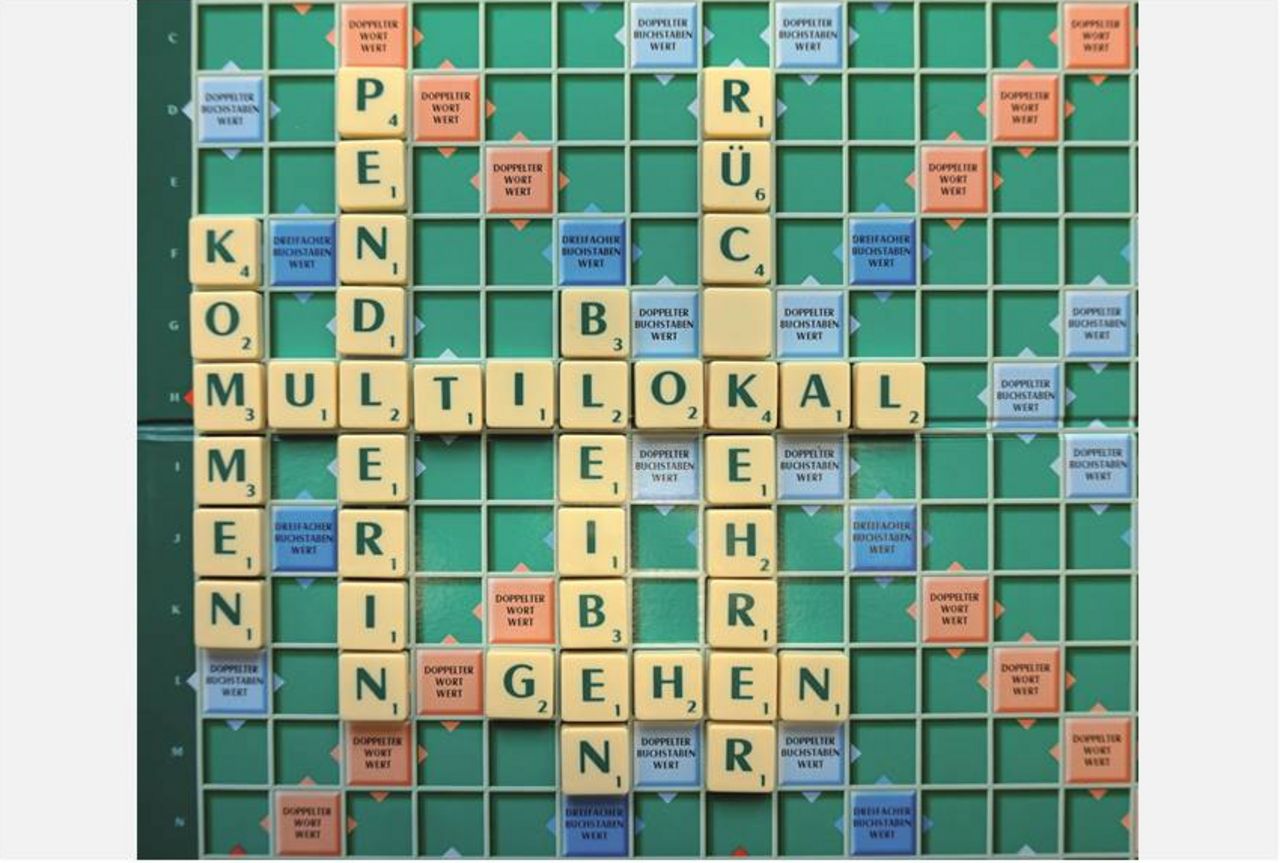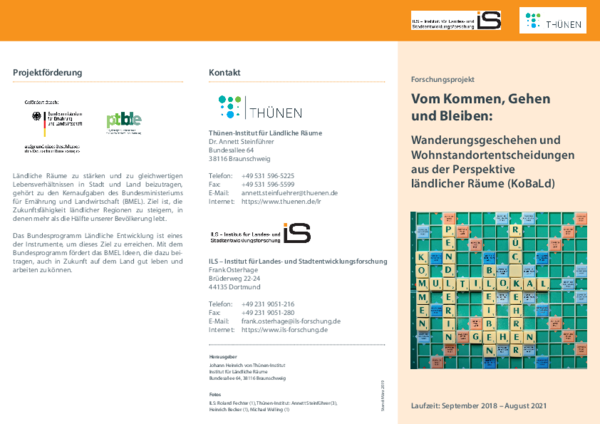Project
On coming, leaving and staying (KoBaLd): Migration processes and residential location decisions from the perspective of rural areas

For a long time, rural areas have been described in the public debate as regions of outward migration. Since the beginning of the Corona pandemic, they have often been regarded in a similarly one-sided way as places of longing and in-migration.
Background and Objective
The decisions for or against residential locations in rural areas should be better empirically presented and understood than in the past, because they are not limited to emigration of certain age and social groups. The diversity of migrations related to rural areas and the decision-making processes on which they are based have so far hardly been systematically researched in Germany. One fundamental deficit is that there is (currently) no large nationwide survey that provides a sound overview of the causes and motivations.
Systematic comparisons between the existing surveys are made more difficult by the fact that, as a rule, a specific study design with only a few superordinate standards is used. The state of research thus presents itself as a disparate and incomplete overall picture with different individual findings, which are difficult to interpret with regard to the general relevance of certain phenomena. In addition, the majority of existing standardised surveys relate to the situation in urban regions and rarely focus on rural areas.
In this project, we investigate different moving decisions associated with rural areas by using various methods. We also consider staying in rural areas and multi-local housing. We concentrate on certain life phases and biographical transistons in which there are regular considerations regarding a change in the place of residence (e.g. beginning of training/studies, starting a family or ending of working life).
Approach
- Module 1: Based on the German migration statistics (register data), we analyse internal migration across municipal borders in Germany for the period 2005–2020 (responsible: ILS).
- Module 2: In 2019/20 we conducted 30 semistructured interviews (15 in large cities, 15 in rural areas) on past and intended residential location decisions. We analyse them through the lens of residential histories (responsible: Thünen Institute and ILS).
- Module 3: In 2020, the project conducted a Germany-wide standardized questionnaire survey (n=3,600) with four subsamples, focusing on three types of migration decisions (within rural areas, rural-to-urban and urban-to-rural migration) and on staying as a fourth option* (responsible: Thünen Institute and ILS).
- Module 4: We synthesize the results of our research and formulate recommendations for practitioners and policy (responsible: Thünen Institute).
* A further subsample of urban-to-urban migrants was financed by the Federal Institute for Research on Building, Urban Affairs and Spatial Development (BBSR). This subsample is also analysed by the KoBaLd project.
Data and Methods
In Module 1 we analyse secondary migration data. In Module 2, we conduct qualitative semi-structured interviews with narrative elements and analyse them with qualitative content analysis. The focus of our work is on Module 3 with a naationwide telephone survey. In 2020, altogether 3,600 respondents were interviewed, structured in four migration sub-samples and one sub-sample of rural stayers. In 2021 and 2022, we analyse these data. In the final Module 4, we use the quantitative and qualitative data to inform each other. This is also done in consultation with rural stakeholders, experts and practitioners.
Our Research Questions
- What trends in migration and, where appropriate, trend reversals can be identified with regard to rural areas in Germany in the period 2005-2020? (Module 1)
- Which factors are particularly relevant for decisions to leave a certain location or to stay there in distinct phases of life? How are such decisions (re)negotiated within households? (Module 2)
- How can we differentiate the different types of residential location decisions with regard to the motives, conditioning factors and the social structure of the households? (Module 3)
- Which conclusions can we draw from the triangulation of different methods with regard to residential location decisions in favour of or against rural areas? (Module 4)
Results
As a result of the project a quantification of the different migration processes affecting rural areas can be expected since 2005. Migrations and decisions to stay in different phases of life are better understood than before. This allows for critically reviewing and empirically substantiating prevailing assumptions about the motives, mechanisms and causes of residential location decisions.
Links and Downloads
Findings from Module 1 on the patterns of internal migration in Germany between 2000 and 2019 and their impacts on spatial development are to be found here (in German only): www.ils-forschung.de/files_publikationen/pdfs/TRENDS-3.21_Binnenwanderungen_ONLINE_high%20resolution.pdf
Thünen-Contact

Involved Thünen-Partners
Involved external Thünen-Partners
- ILS - Institut für Landes- und Stadtentwicklungsforschung
(Dortmund, Deutschland)
Funding Body
-
Federal Ministry of Food und Agriculture (BMEL)
(national, öffentlich)
Duration
9.2018 - 10.2022
More Information
Funding program: Bundesprogramm Ländliche Entwicklung
Project status:
finished
Publications to the project
- 0
Osterhage F, Steinführer A (2022) Wer zieht wohin? LandInForm(3):12-13
- 1
Peter H, Tippel C, Steinführer A (2022) Wohnstandortentscheidungen in einer wohnbiographischen Perspektive : Eine explorative Studie in ländlichen und großstädtischen Kontexten. Braunschweig: Johann Heinrich von Thünen-Institut, 152 p, Thünen Rep 93, DOI:10.3220/REP1647852571000

![[Translate to English:] [Translate to English:]](/media/_processed_/2/0/csm_LV_Bei_Hornburg_Quelle_Johanna_Fick_neu_da89674833.jpg)
![[Translate to English:] [Translate to English:]](/media/_processed_/2/0/csm_LV_Bei_Hornburg_Quelle_Johanna_Fick_neu_3aae309567.jpg)

![[Translate to English:] Logo des Bundesministerium für Ernährung und Landwirtschaft](/media/allgemein/logos/BMEL_Logo.svg)